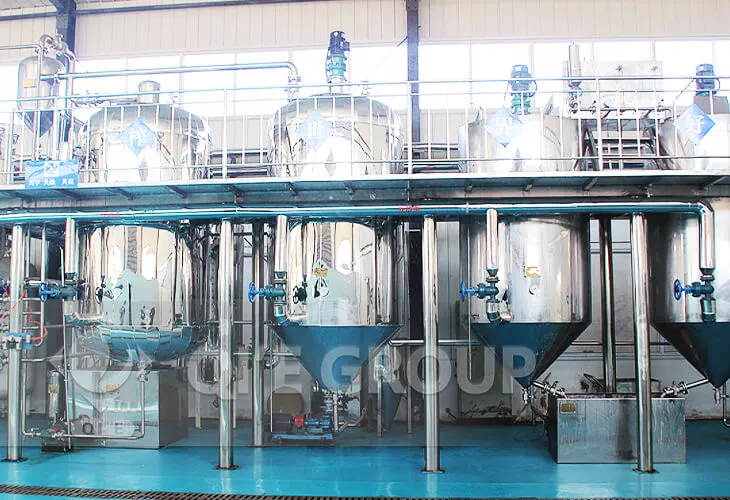
In the global edible oil market, soybean oil holds a significant share due to its wide range of applications and relatively low cost. However, many global buyers have misunderstandings and questions about how soybean oil factories achieve high oil yields. Some may think that high oil yields are only achieved through the use of special additives or advanced but expensive equipment. In fact, the multi - step production process in soybean oil factories is the key to high oil yields.
The first step in soybean oil production is cleaning. Raw soybeans often contain impurities such as soil, stones, and broken beans. These impurities not only affect the quality of the oil but also reduce the efficiency of subsequent processes. By using advanced cleaning equipment, soybean oil factories can remove up to 99% of impurities. For example, in a large - scale soybean oil factory in the United States, after the cleaning process, the oil yield increased by about 3% compared to uncleaned soybeans.

Soybean shells contain very little oil and a high proportion of fiber, which can absorb oil during the pressing process. Therefore, removing the shells is crucial. After shelling, the oil yield can be increased by 2 - 3%. In a Brazilian soybean oil factory, through shelling, the overall oil yield reached 17% from the previous 14 - 15%.
The first pressing is the primary way to extract oil from soybeans. Using mechanical pressing equipment, about 10 - 12% of the oil can be extracted from soybeans. This step not only extracts a large amount of oil but also breaks the cell structure of soybeans, facilitating further oil extraction in subsequent steps.

After the first pressing, the soybean cakes are steamed. Steaming can further break the cell walls of soybeans, making the remaining oil easier to extract. During the steaming process, the temperature and time are strictly controlled. Generally, steaming at 100 - 110°C for 30 - 40 minutes can increase the oil yield in the next pressing step by about 4 - 5%.
After steaming, the soybean cakes are pressed again. This second pressing can extract an additional 6 - 8% of oil. Combining the first and second pressings, the total oil yield can reach 18 - 20%.
The crude oil obtained from pressing contains impurities such as soybean residues and phospholipids. Filtration can remove these impurities, improving the clarity and quality of the oil. Through a multi - stage filtration system, the impurity content in the oil can be reduced to less than 0.1%.
Refining is the final step to improve the quality of soybean oil. It can remove odors, colors, and free fatty acids in the oil, making the oil more stable and suitable for long - term storage. After refining, the acid value of the oil can be reduced to less than 0.1 mg KOH/g, and the peroxide value can be reduced to less than 0.2 meq/kg.

The multi - step production process in soybean oil factories is of great importance. It not only ensures a high oil yield of 18 - 20% but also improves the quality of the oil, making it more competitive in the global market. For global buyers, choosing a soybean oil factory with a multi - step production process can bring higher production efficiency and better economic benefits.
We encourage you to share your thoughts and questions in the comments section below. If you are interested in our high - quality soybean oil produced through a multi - step process, please click the button below to contact us and start a profitable cooperation!

